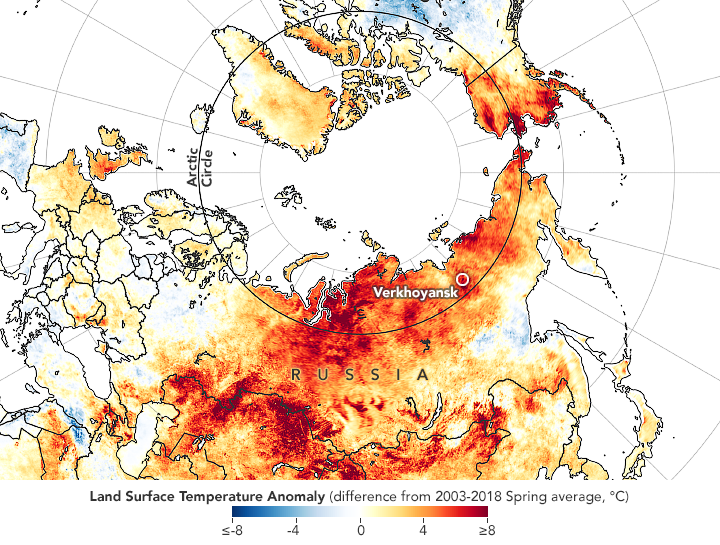
Enlarge / Average temperatures from March 19 to June 20. (credit: NASA/EO)
Generally speaking, 2020 has been a hell of a year. But in Siberia, there is an additional reason to make comparisons to the inferno: record-breaking warmth and its consequences. Wildfires have burned about 8,000 square miles, aided by a bumper crop of silk moths consuming the needles off conifers. And slumping permafrost also contributed to a massive diesel spill when a tank on unstable ground burst.
The immediate cause of this extreme year was last winter’s jet stream pattern, which kept Siberia mild from later winter into spring, melting ice and snow early and boosting the warmth further. Then in June, a stubborn high pressure set up, as a northward wiggle of the jet stream brought warmer air from the south into Siberia. It was during this heatwave that the Russian town of Verkhoyansk apparently hit 38°C (100°F)—a first for any station above the Arctic Circle.
As with many extreme weather events in recent years, a team of scientists has completed a rapid analysis of the role of climate change in all this. The scientists analyzed both that record high temperature and the warm January-to-June across the region, concluding “in both cases that this event would have effectively been impossible without human-induced climate change.”
No comments:
Post a Comment